Last updated: March 11, 2021
Article
Desert Bighorn Sheep: Connecting a Desert Landscape
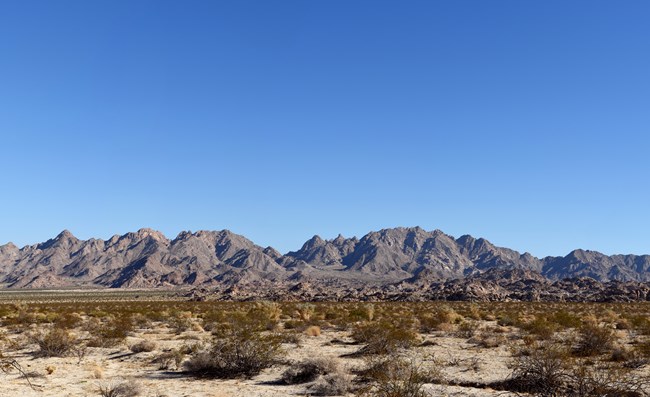
NPS
Imagine yourself driving on the interstate across the desert of the southwest. You look out the car window and see a landscape that seems desolate and lifeless. There is not a cloud in the sky and the sun is beating down. You can feel the heat as it comes through the window glass. Dust swirls across the ground as a dry breeze wafts by. It is hard to believe that anything could live in a place like this. However, past the window glass and beyond the road lies a vast land full of life. In the distance, you see mountains dotting the horizon like small islands, or large playas spanning the valleys. Each one plays a key role in connecting and giving life to the land that we know as the Mojave Desert.
The Mojave Desert spans across California, Arizona, and parts of Nevada and Utah. Take a moment to think about the mountains in the distance you see out the car window. These groups of mountains act as sky islands where many plants and animals survive and thrive in the desert. One of the species that call these mountain islands home is the desert bighorn sheep (Ovis canadensis nelsoni).
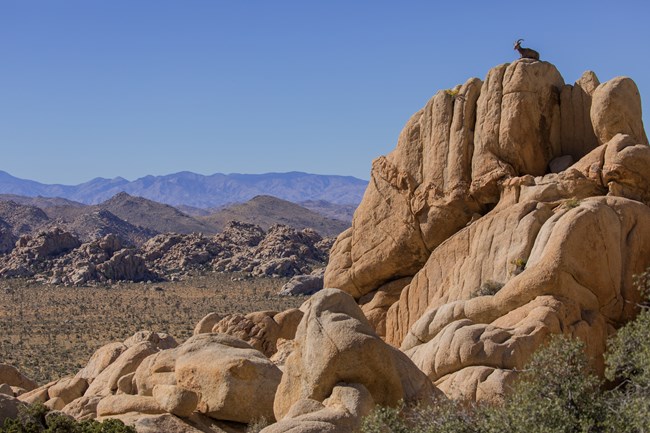
NPS
Desert bighorn sheep prefer steep and rocky habitats, which makes these mountain ranges an ideal location. The ranges have cooler temperatures and trap more rainfall than the desert floor, thus, supporting an abundance of plant life, including many species which desert bighorn eat. Not only do these ranges provide water and food, but they also provide security from predators. However, these desert ranges are small, compared to the Rocky Mountains or Sierra Nevada Mountains, and surrounded by low valleys. They can only support a limited number of bighorn sheep. Though these animals are adapted to this, small populations can be vulnerable if they cannot find a way to interact with other herds and resources in neighboring mountains. Movement is crucial for living in these remote areas. Bighorn populations in these mountain ranges are linked to each other through intermountain movements, creating a network known as a metapopulation. Bighorn movement and socialization help to maintain genetic diversity, strengthen faltering populations, and support natural recolonization after local extinction.
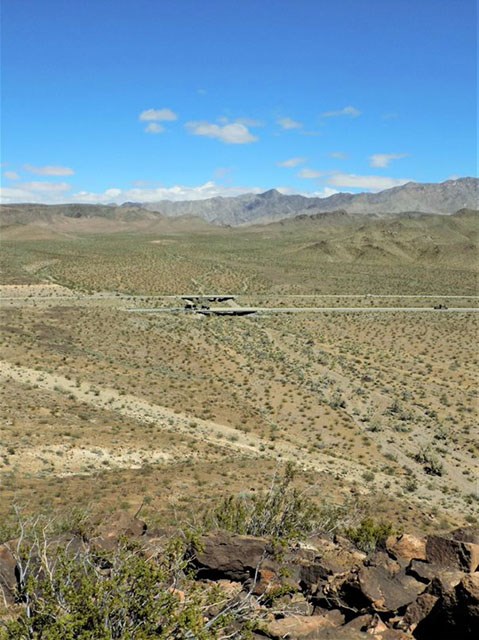
C. Aiello
Movement is important to the survival of the desert bighorn, so what happens if they cannot move between these mountain ranges and what might stop them? While it may speed up your movement, that very same highway that you race down is a barrier to bighorn movement. Human-made structures, like highways, canals, and renewable energy developments, can partially or completely block bighorn movement between mountains. This in turn, decreases gene flow and genetic diversity, and can prevent recolonization of local populations that have disappeared. Without these things, bighorns' ability to adapt to climate change, disease, or other stressors, becomes limited.
National park lands play an important role in protecting desert bighorn sheep—they provide healthy habitats and key reservoirs of genetic diversity. For bighorn sheep surrounding parks to receive these benefits, the landscapes between them need to allow for movement. To understand and improve the connectivity of bighorn populations, the National Park Service is collaborating with Oregon State University, California Department of Fish and Wildlife, Bureau of Land Management, Department of Defense, CalTrans, and the Society for Conservation of Bighorn Sheep. This group of organizations developed a project to evaluate how desert bighorn sheep interact with human-made barriers, identify ways to improve movement across those barriers, and assess sites for evidence of bighorn sheep recolonization around Death Valley National Park, Mojave National Preserve, and Joshua Tree National Park.
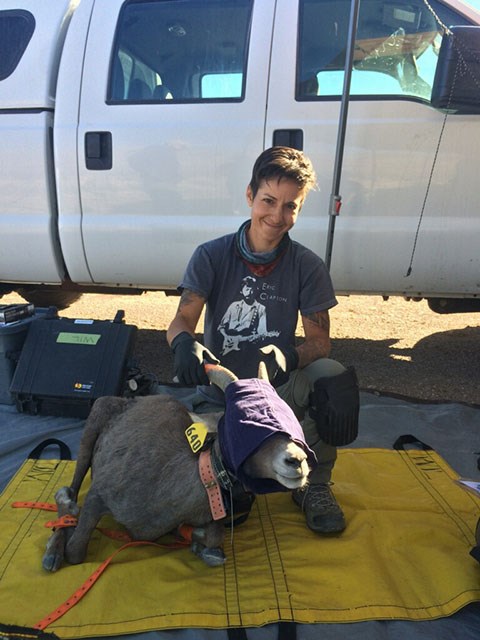
C. Aiello
Researchers are evaluating whether existing underpasses provide the right conditions for bighorn to cross under the highway, and whether providing other incentives might encourage them to do so. Bighorn sheep are naturally wary of enclosed spaces that limit their view of approaching predators, so an underpass may present a dangerous situation. In addition to not being designed to make bighorn sheep feel safe, highway underpasses are typically placed to allow for water flow and may not be in the best spot for bighorn to travel efficiently between mountains. However, by providing an important resource nearby, will they feel safer and more willing to use existing underpasses? Even with increased monitoring of underpasses in the past two years, preliminary data suggests desert bighorn sheep are not using underpasses to move between mountain ranges very often. The research team is using newly installed water sources (guzzlers) to encourage travel under these less-than-ideal structures, but it may take time for them to locate this totally new resource in their environment. To track the use of underpasses and the effectiveness of the added water sources in encouraging underpass use, the project team placed GPS radio collars on bighorn sheep, and use remote cameras, track and sign observations, and genetic material from scat to identify crossing events.
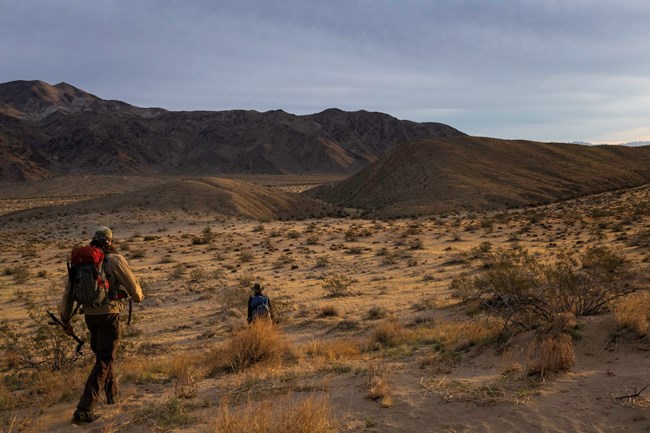
C. Aiello
Researchers are also working to collect evidence of natural recolonizations, which is a good sign of functional landscape connectivity. There are a number of mountain ranges that used to support bighorn sheep, but do not currently host a resident population. Habitat connectivity allows for individuals from nearby mountains to colonize these empty habitats. Local extinctions and recolonizations can be part of the natural pattern of a metapopulation, but external threats and changes to the landscape might make recolonization more difficult. Human-made barriers, for example, can prevent movement to empty patches and lead to fewer bighorn populations in the long-term.
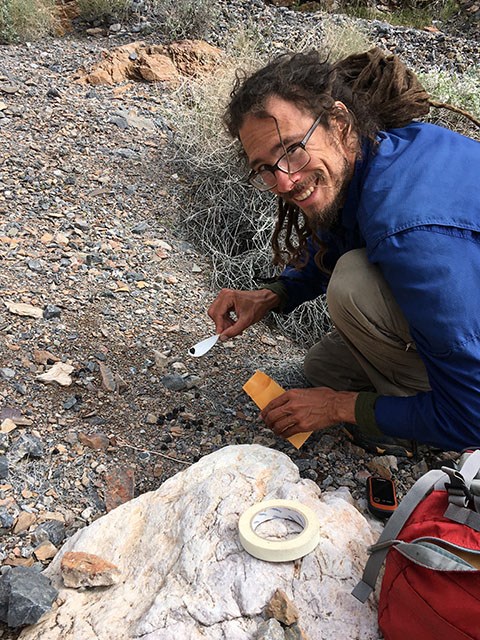
C. Aiello
So, how do researchers know that a few bighorn sheep have moved into a large rugged mountain range? Think of how many times you have visited parks like Joshua Tree and Death Valley, or other areas desert bighorn sheep call home. How often have you spotted bighorn sheep? Probably not very often. Their ability to traverse rocky terrain quickly makes it difficult to observe bighorn sheep directly, but they leave clues behind that let you know they were there. Researchers are testing another survey approach based on identifying tracks, scat and bedding sites for clues of bighorn recolonizations. These clues can be very useful, but to ensure the evidence is not misread, researchers also use genetic analyses to confirm that any collected scat came from a bighorn sheep. Genetic material from scat can even be used to determine the origin of a specific animal because the genetic patterns of these bighorn populations have been monitored over decades.
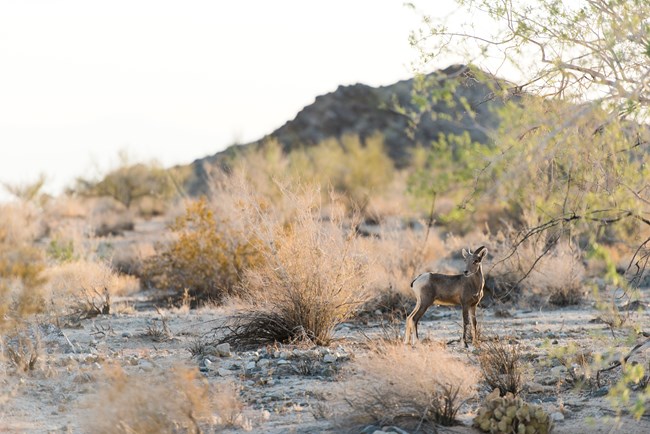
NPS
Scientific studies generally take time—often many years—to create the structure of the study, do the work, adapt the study to changing information, collect data, analyze the data, and then make recommendations. When studying animal behavior, the animal dictates what happens and sometimes biological processes take years or decades to play out. Researchers are still collecting data, but the results may provide telling information about how we can help support and protect bighorn populations across the Mojave Desert into the future. Next time you look out the car window as you drive down that long straight highway, see if you notice anything different. Perhaps it will not look as desolate as you once believed. You may spot a Joshua tree, or two, growing nearby or maybe even see a bighorn sheep making its way across the desert.
Tags
- death valley national park
- joshua tree national park
- mojave national preserve
- death valley national park
- mojave national preserve
- joshua tree national park
- bighorn sheep
- research studies
- mojave desert
- bureau of land management
- california department of fish and wildlife
- oregon state university
- society for conservation of bighorn sheep
- department of defense
- caltrans
- connected conservation month
- connected conservation
